From VenturaPublications.com
RNZAF Corsairs - what shade of blue is correct?
By Malcolm Laird
Mar 9, 2016, 18:39
A perennial question for modellers is “what shade of blue is correct for RNZAF Corsair roundels?”
Peter Mossong advises... As a rule-of-thumb, if the roundel was painted in New Zealand it was more likely to be medium blue. If it was painted in the Pacific war zone, dark blue was more likely. We are adopting a policy of selecting blues for our decals on a case by case basis with two dark blues plus one medium blue used for sheets V7285 and V4897
The most requested decal scheme of all, ‘Kohimarama IX’, with dark blue roundels is depicted on our new V7285 and V4897 sheets along with two other options with correct medium blue roundels.
Buy RNZAF Corsair Decals HERE.
The following three profiles show the three colour schemes in V7285 and V4897. The 1/32 scale sheet, V3282, includes ‘Kohimarama IX’ and "Verna"
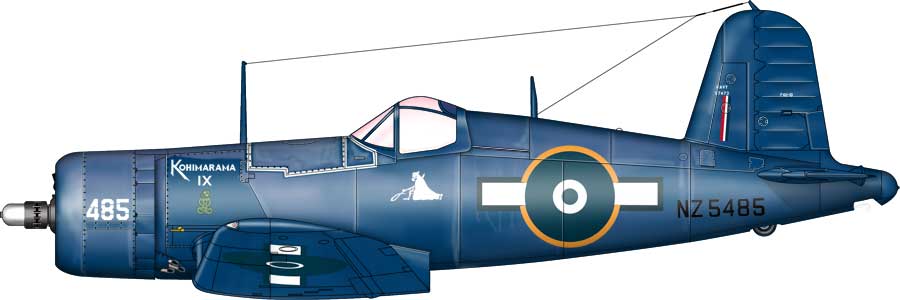 |
| F4U-1D NZ5485 “Kohimarama IX” Overall colour scheme is Glossy Sea Blue. Propeller blades are black with yellow-orange tips plus a white spinner. |
 |
| FG-1D Corsair NZ5617 “Verna” with No.14 Squadron, RNZAF, Japan, 1946. NZ5617 is in the US Navy all-over Glossy Sea Blue scheme with 48 inch roundels on the wings and 36 inch on the fuselage. Note the painted out “shadow” of the previous roundel-and-bar markings. Propeller blades are black with yellow-orange tips. Spinner is also yellow-orange. |
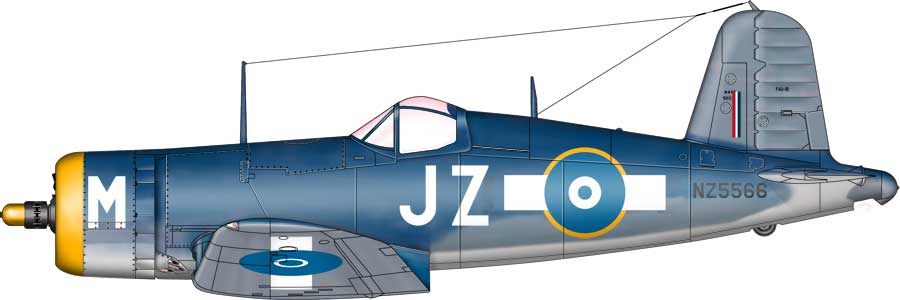 |
| NZ5566 of the Fighter Leader School, Ardmore, 13 April 1945. It’s national insignia has been re-applied in New Zealand, with the roundel diameters reduced from the original US Navy size |
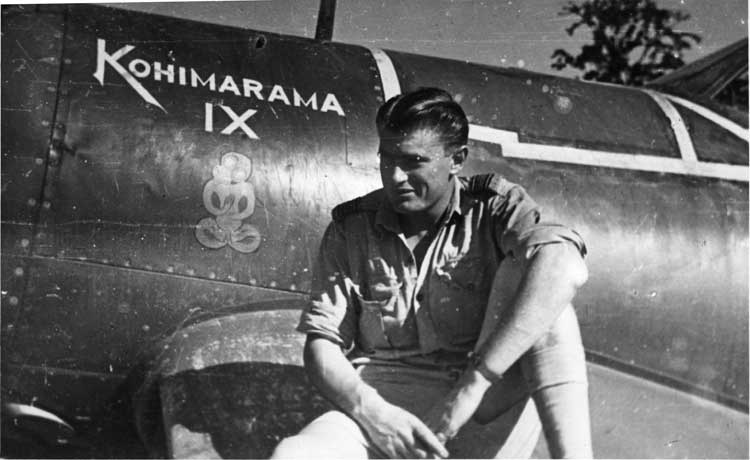 |
| Flying Officer Alex Daly sits on NZ5485 “Kohimarama IX”, most likely on Los Negros, August 1945. Overall colour scheme is Glossy Sea Blue. Propeller blades are black with yellow-orange tips plus a white spinner. (Stephanie Brooks) |
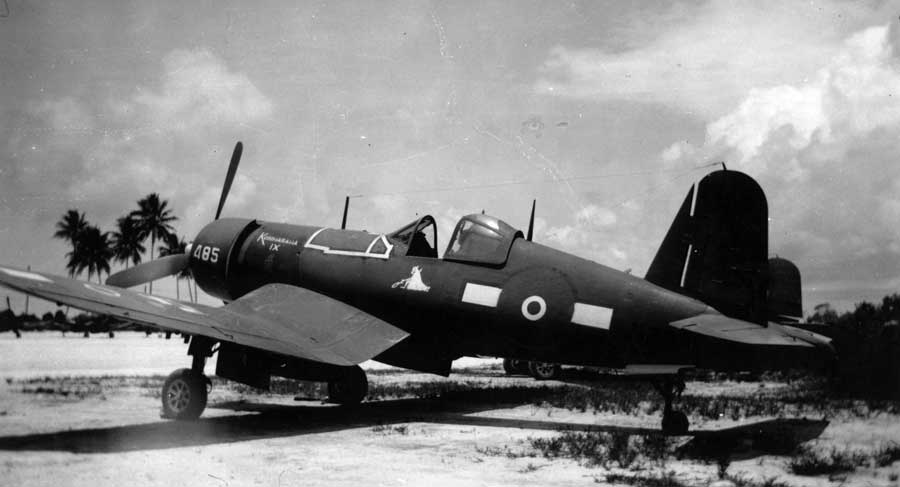 |
| F4U-1D Corsair NZ5485, Los Negros, August 1945. This aircraft is named ‘Kohimarama IX’ (after a suburb of Auckland). Beneath the name is a green maori tiki. This aircraft was operated by No.23 Squadron “The Ghosts”. Residents near their Ardmore training base said they could not actually see the pilots in their big Corsairs – they appeared to be flown by ghosts. This photo was taken with orthocromatic film causing the yellow ring of the fuselage roundel to appear dark and the blues to appear lighter. (via John Regan) |
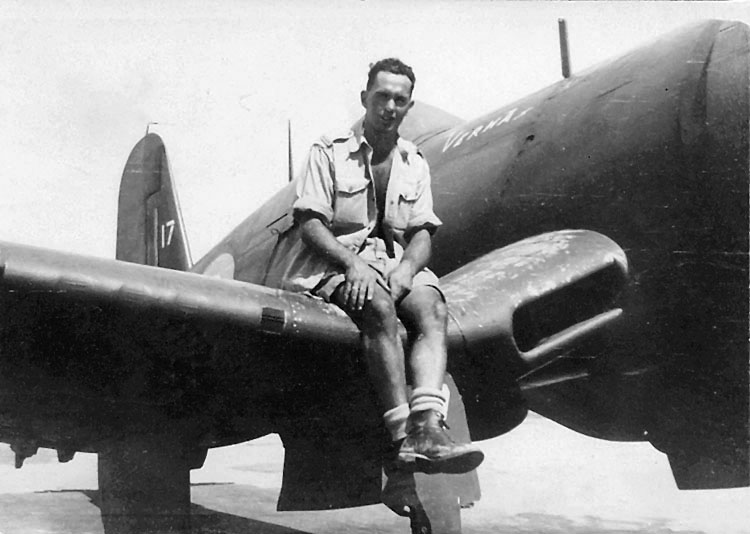 |
| Ground crew member Len Mossong sitting on the wing of ‘His’ aircraft, NZ5617. Note the taped over and painted gun ports. ‘Verna’ was the name of his then fiancée, later to become his wife. (Peter Mossong) |
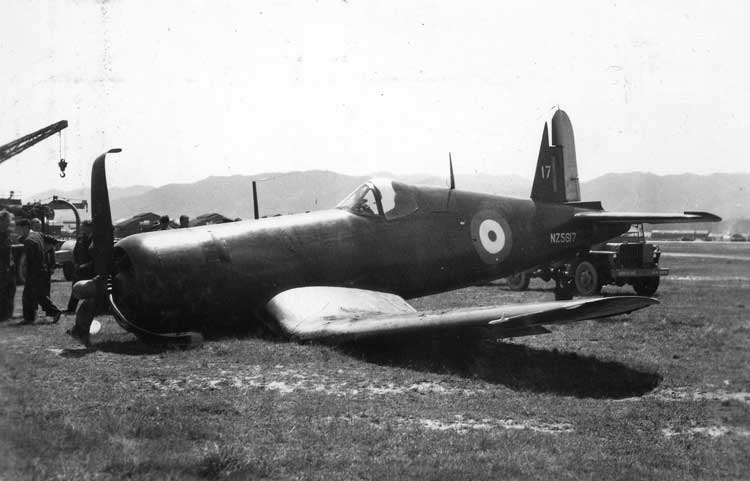 |
| On 9 May 1947 NZ5617 “Verna” belly landed at Iwakuni. The pilot, Flying Officer P.K. Frame took off on an Army co-operation exercise but found that the undercarriage would not fully retract. He then tried to lower the wheels by various means; attempting to raise and lower the undercarriage, rocking the wings, making high “G” turns and flying at low speed, but all attempts failed. (Peter Mossong) |
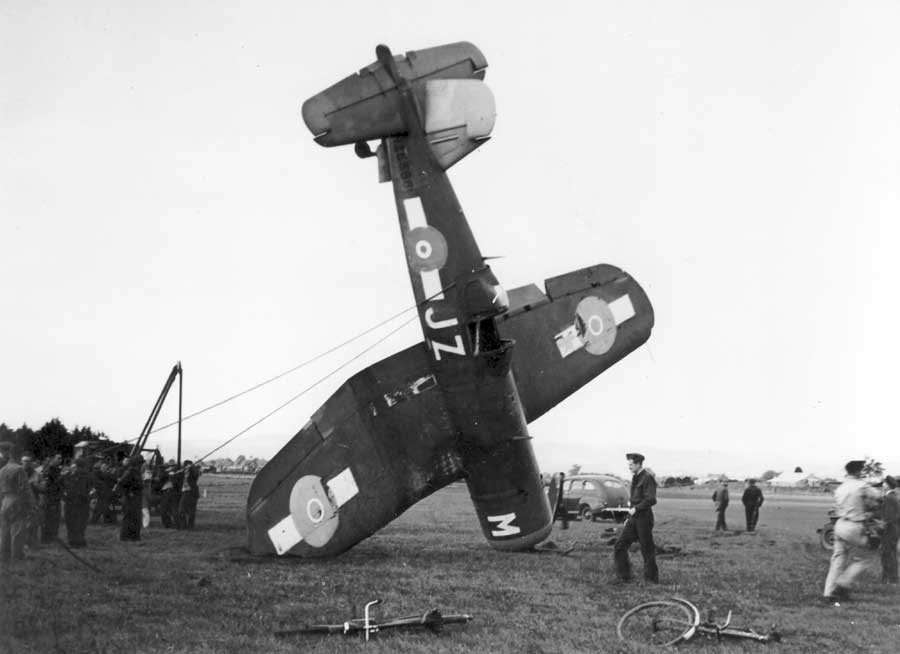 |
| NZ5566 of the Fighter Leader School, Ardmore, 13 April 1945. It’s national insignia has been re-applied in New Zealand, with the roundel diameters reduced from the original US Navy size. (via A. Galbraith) |
© Copyright 2004-2013 VenturaPublications.com and contributors.
|